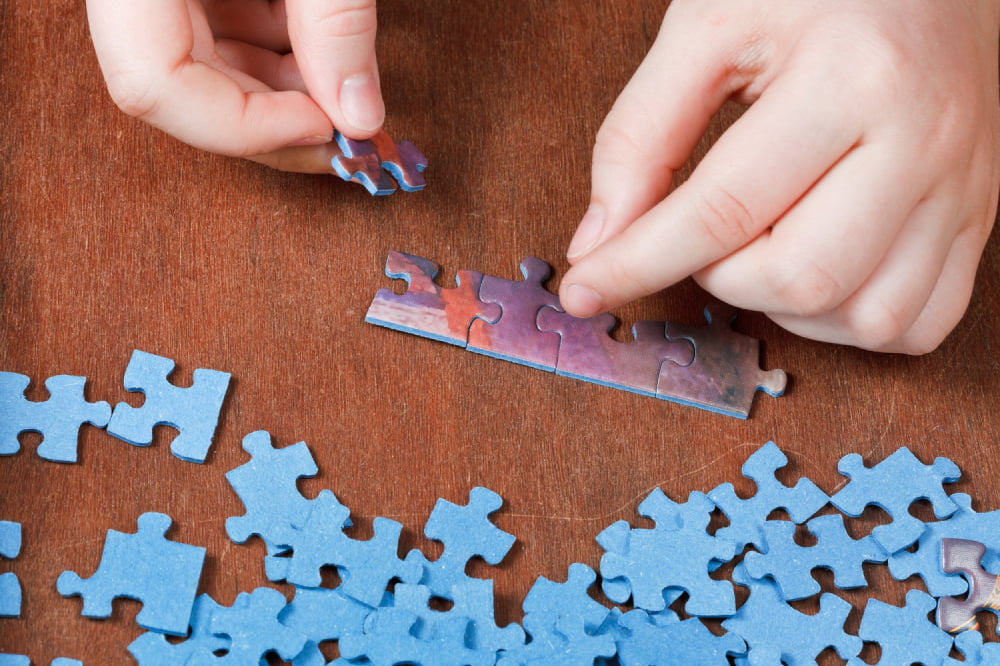
A guide to different types of puzzles and their benefits
Puzzles are brain teasers that offer entertainment, cognitive challenges, and educational benefits. They come in various forms and are an excellent pastime for adults and kids alike. Furthermore, these riddles have found their way into professional settings as well. Nowadays, employers use them in interviews to evaluate the problem-solving skills of their potential employees. Read on to explore the wonderful world of puzzles, their benefits, and how they cater to different age groups.
Benefits of solving puzzles
- Memory improvement- Regular puzzle-solving can lead to better memory retention and recall.
- Stress reduction- Solving brain teasers can be a relaxing and enjoyable activity that allows you to shift your focus away from daily stressors.
- Increased productivity- Regularly engaging in riddles can boost productivity by sharpening problem-solving skills and improving concentration.
- Improved spatial reasoning- Many puzzles, such as jigsaw puzzles, require people to visualize and manipulate shapes in their minds. This enhances spatial reasoning.
- Boosts creativity- Puzzles encourage you to approach problems from different angles, fostering creativity and innovative thinking.
Puzzles for adults- Challenges for the mind
- Crossword puzzles- Crosswords are word puzzles for adults that require filling in answers based on given clues. They are an excellent way to improve vocabulary, lateral thinking, and general knowledge.
- Sudoku- It is a number puzzle that involves filling a 9×9 grid with digits. After solving the riddle, each column, each row, and each subgrid must contain all digits from 1 to 9. Sudoku is known to improve logic and critical thinking.
- Logic puzzles- Logic puzzles are brain teasers that require deductive reasoning to arrive at the correct solution. They come in various forms, such as grid-based puzzles and riddles, which enhance problem-solving.
- Jigsaw puzzles- These riddles involve assembling various pieces to form a complete picture. They enhance visual perception, spatial awareness, and patience.
Puzzles for kids- Fun and educational
Puzzles can be highly beneficial to children’s cognitive growth and education. Here are some suitable types of puzzles for kids-
- Math puzzles- Math riddles make learning math concepts enjoyable and engaging. They can involve basic arithmetic, pattern recognition, and sequencing.
- Word puzzles- Word riddles like word searches, anagrams, and crosswords help improve vocabulary, spelling, and language skills.
- Picture puzzles- Picture puzzles, such as spot-the-difference and hidden object games, develop observational skills and attention to detail.
- Maze puzzles- Maze head-scratchers challenge children’s problem-solving and visual-spatial skills as they find their way through a complex path to reach the goal.
Tips for solving puzzles easily
Regardless of age, effective puzzle-solving requires certain strategies and approaches. Here are some tips for solving puzzles-
- Break it down- If a puzzle seems overwhelming, break it down into smaller parts and tackle each section separately.
- Work on various puzzles- Variety is the key to improving your cognitive abilities. Work on different types of puzzles to challenge your brain in various ways.
- Collaborate and seek help- Don’t hesitate to seek assistance or collaborate with others. A new perspective can sometimes lead to a breakthrough.
Puzzles for interviews- Enhancing problem-solving skills
In recent years, puzzles have become a common component of job interviews. Employers use them to assess candidates’ problem-solving abilities and approaches to complex situations. Here’s how puzzles are integrated into interviews-
- Employers use riddles to evaluate candidates’ critical thinking, creativity, and ability to handle pressure under pressure.
- Puzzles for interviews can range from classic riddles to logic-based challenges that require innovative solutions.
- For tackling interview riddles, stay calm and carefully read the problem. Next, break it into manageable parts and communicate your thought process to the interviewer.




